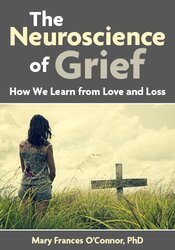
×

Why does grief hurt so much? Why does death, the permanent absence of a person with whom you are bonded, result in such devastating feelings and lead to behavior and beliefs that are inexplicable, even to the grieving person? Neuroscience and cognitive psychology can provide some answers beyond what grief feels like—tackling the questions of why. Some of the answers to our questions about grief can be found in the brain, the seat of our thoughts and feelings, motivations, and behaviors. By looking at grief from the perspective of the brain, we will discuss the contemporary neuroscience of how bonded relationships are encoded in order to better understand the why of grief. Considering grieving to be a form of learning is helpful to understanding the trajectory of adaptation during bereavement.
All members of the PESI, Inc. planning committee have provided disclosures of financial relationships with ineligible organizations and any relevant non-financial relationships prior to planning content for this activity. None of the committee members had relevant financial relationships with ineligible companies or other potentially biasing relationships to disclose to learners. For speaker disclosures, please see the faculty biography.
Continuing education credit information is coming soon for this non-interactive self-study package.
CEs may be available for select professions, as listed in the target audience. Hours will be dependent on the actual recording time. Please check with your state licensing board or organization for specific requirements.
There may be an additional fee for CE certificates. Please contact our Customer Service at 1-800-844-8260 for more details.
**Materials that are included in this course may include interventions and modalities that are beyond the authorized practice of your profession. As a licensed professional, you are responsible for reviewing the scope of practice, including activities that are defined in law as beyond the boundaries of practice in accordance with and in compliance with your professions standards.
| File type | File name | Number of pages | |
|---|---|---|---|
| Manual - The Neuroscience of Grief (4.8 MB) | 22 Pages | Available after Purchase | |
| Manual - The Neuroscience of Grief - French (4.8 MB) | 22 Pages | Available after Purchase | |
| Manual - The Neuroscience of Grief - Italian (4.8 MB) | 22 Pages | Available after Purchase |

Mary-Frances O’Connor is an associate professor of clinical psychology and psychiatry at the University of Arizona. Her research focuses on the physiological correlates of emotion, in particular the wide range of physical and emotional responses during bereavement, including yearning and isolation. She believes that a clinical science approach toward the experience and mechanisms of grieving can improve interventions for prolonged grief disorder, newly included in the revised DSM-5.
Speaker Disclosures:
Financial: Mary-Frances O'Connor has an employment relationship with the University of Arizona and receives royalties as a published author. She receives a speaking honorarium from PESI, Inc. She has no relevant financial relationships with ineligible organizations.
Non-financial: Mary-Frances O'Connor has no relevant non-financial relationships.
Access never expires for this product.
Visit our FAQ page at https://www.pesicanada.ca/faq or contact us at https://www.pesicanada.ca/contact-us.
Neurobiology of grief and grieving
Prolonged Grief Disorder (PGD)
Grieving as a form of learning
Toolkit of coping strategies and psychotherapeutic intervention
Satisfaction Guarantee
Your satisfaction is our goal and our guarantee. Concerns should be addressed to info@pesicanada.com.
Please wait ...